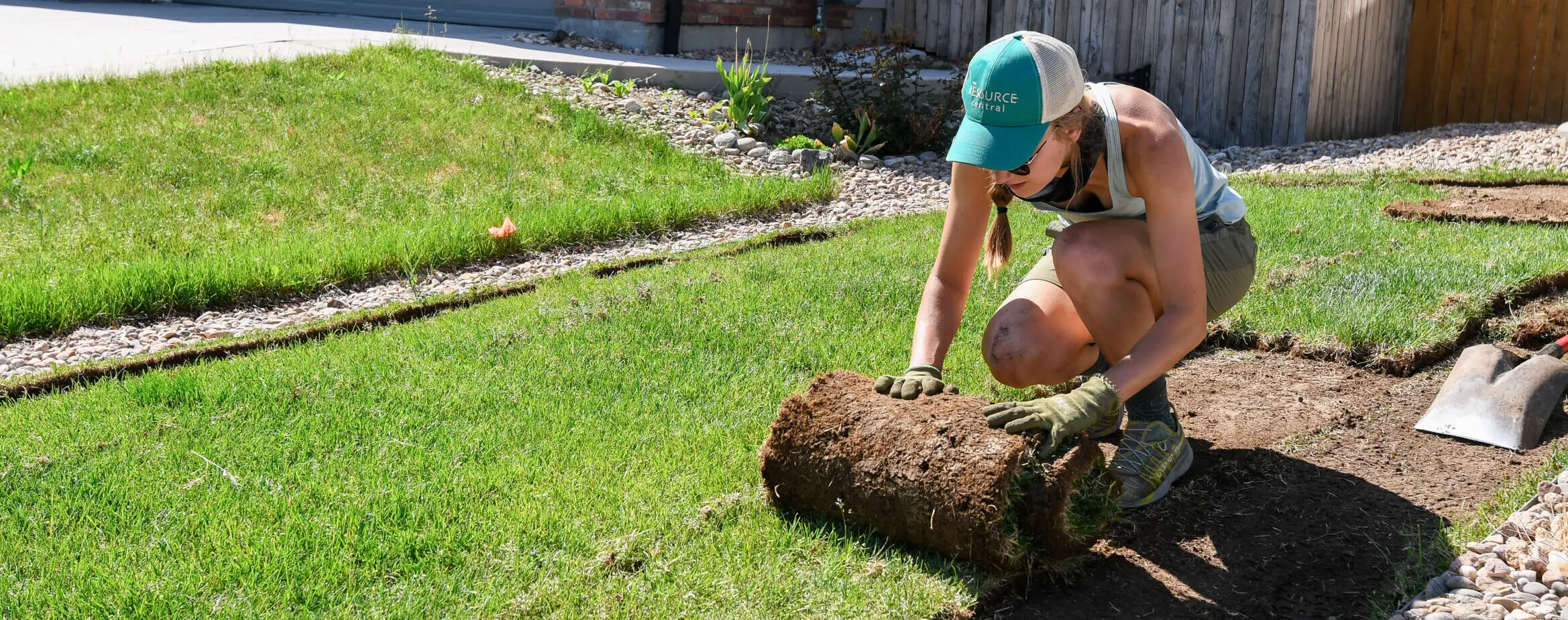If you’re planning to install sod this season, one of the first questions you’ll have is: how long before I can actually use it? Homeowners want to know when it’s safe to walk on, mow, or let the kids and dog out to play.
The answer depends on soil prep, watering, weather, and how you care for it in the first few weeks. Here’s the full timeline so you know what to expect.
The Sod Rooting Timeline
| Stage | Timeline | What’s Happening | What You Can Do |
|---|---|---|---|
| Initial Rooting (shallow) | 7–14 days | Sod sends out short roots into topsoil. | Light watering daily. No foot traffic. |
| Deep Rooting (establishment) | 2–6 weeks | Roots grow deeper and begin anchoring sod. | Water less often but deeply. First mow. |
| Full Rooting (usable lawn) | 6–8 weeks | Sod is fully tied into soil base. | Normal use, light play, pets allowed. |
| Heavy Use Ready | 2–3 months | Roots are strong enough for sports, heavy traffic. | Normal watering schedule. Fertilization. |
Most sod in Ontario is safe to walk on in 2–3 weeks, mow at 3–4 weeks, and use regularly after 6–8 weeks.
What Affects Sod Rooting Speed
Soil Preparation
Sod roots best in properly graded, loosened soil with good topsoil coverage. Laying sod on hard clay or unprepped ground can delay rooting by weeks.
Watering Schedule
- Week 1–2: Light watering daily to keep roots moist.
- Week 3–4: Deeper watering every 2–3 days to encourage deeper roots.
- After Week 4: Transition to normal watering, about 1″ per week depending on rainfall.
Temperature & Season
Spring and early fall are ideal. Cool temps and steady rain speed rooting. Summer heat can slow root growth if sod dries out. Late fall sod often “pauses” until spring.
Foot Traffic
Walking on sod before it roots breaks fragile roots and leaves gaps. Even light use can delay rooting.
Type of Sod
Kentucky Bluegrass, common in Ontario, usually roots in 2–3 weeks. Blends with fescue or ryegrass can vary slightly.
Signs Your Sod Has Rooted
- Tug test: gently pull on a corner—if it resists, roots are established.
- Fresh green growth at seams shows roots are feeding.
- A firmer, less spongy feel underfoot means the sod has anchored.
First Mow: When and How
Wait until the grass reaches 3–4 inches high, usually around week 3. Set mower blades high for the first cut and never scalp the lawn. Make sure the ground is dry to avoid tearing the sod, and always use a sharp mower blade to reduce stress.
Common Mistakes That Delay Rooting
- Overwatering, which keeps roots shallow.
- Underwatering, which dries out sod and leaves brown patches.
- Skipping soil prep before installation.
- Walking on sod too soon.
- Cutting too short during the first mow.
How to Speed Up Sod Rooting
- Add screened topsoil or compost before laying sod.
- Fertilize at week 4 with a slow-release blend.
- Aerate nearby compacted soil to improve root penetration.
- Water deeply, not just often, to train roots to grow downward.
When Will Sod Be Family Ready?
2 weeks – Short trips across the lawn only.
4 weeks – Light play, mowing, and pets allowed with caution.
6–8 weeks – Safe for kids, pets, and regular family use.
3 months+ – Strong enough for backyard sports and heavy traffic.
Final Word
Sod gives you an instant green lawn, but it isn’t instantly ready for use. Expect 6–8 weeks before it’s a stable, usable lawn and up to 3 months before it can handle heavy use.
If you prepare the soil properly, water correctly, and keep traffic off in the early weeks, you’ll speed up rooting and enjoy a healthier, longer-lasting lawn. Think of it as an investment: a little patience now means a lush yard you can enjoy for years.
